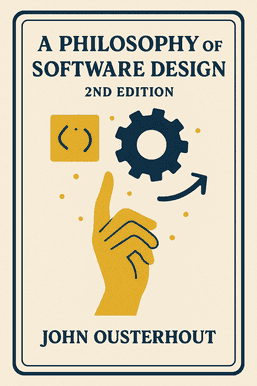What is Software Architecture in Practice by Len Bass about?
Software Architecture in Practice by Len Bass, Paul Clements, and Rick Kazman is a comprehensive guide to designing, analyzing, and managing software architectures for complex systems. The book covers how software systems are structured, how elements interact, and how architecture drives quality attributes like performance, security, and modifiability. It emphasizes practical methods including quality attribute scenarios, architectural tactics, and proven design patterns to help architects create effective, business-aligned solutions.
Who is Len Bass and what is his background?
Len Bass is a renowned software engineer and Emeritus professor with over 30 years of experience in software architecture research. He earned his Ph.D. in Computer Science from Purdue University in 1970 and spent significant time at Carnegie Mellon University's Software Engineering Institute. Bass has authored multiple bestselling books on software architecture and DevOps, and his work on Software Architecture in Practice has won the Software Development Magazine's Jolt Productivity Award twice.
Who should read Software Architecture in Practice?
Software Architecture in Practice is essential for software architects, senior developers, system designers, and technical managers who build or oversee large-scale software systems. The book is valuable for professionals seeking to make informed architectural decisions, manage system complexity, and balance quality attributes. It's also beneficial for graduate students studying software engineering and anyone responsible for acquiring or evaluating complex software systems for organizations.
Is Software Architecture in Practice worth reading in 2025?
Software Architecture in Practice remains highly relevant in 2025, especially the 4th edition released in 2021 with eleven new chapters. The updated content covers modern topics including cloud computing, mobility, DevOps, machine learning, quantum computing, and energy efficiency. As a field bestseller with over 14,000 copies sold and continuous updates spanning four editions since 1998, it represents the definitive, proven guide for architecting contemporary software systems.
What are quality attributes in Software Architecture in Practice?
Quality attributes in Software Architecture in Practice are non-functional requirements that determine system success, including performance, security, usability, modifiability, availability, and testability. Len Bass introduces quality attribute scenarios as a method to specify, measure, and achieve these requirements through concrete, measurable criteria. The book emphasizes that architects must carefully balance trade-offs between competing attributes while aligning with stakeholder needs and business objectives.
What is the Attribute-Driven Design (ADD) method in Software Architecture in Practice?
The Attribute-Driven Design (ADD) method is a systematic, iterative approach that guides architects through the design process with a primary focus on achieving specific quality attributes. The method involves reviewing inputs, selecting appropriate design concepts, instantiating architectural patterns, defining component interfaces, and verifying alignment with requirements. By prioritizing quality attributes from the start, ADD helps architects create designs that are both effective and efficient in meeting stakeholder needs.
What is the Architecture Tradeoff Analysis Method (ATAM) explained in the book?
The Architecture Tradeoff Analysis Method (ATAM) is a proven evaluation technique introduced in Software Architecture in Practice for analyzing architectural decisions and their impacts on quality attributes. ATAM helps architects identify trade-offs between competing quality requirements, assess risks, and validate that designs meet stakeholder needs before implementation. This method enables teams to make informed decisions by systematically evaluating how architectural choices affect multiple quality attributes simultaneously.
How does Len Bass define software architecture in Software Architecture in Practice?
Len Bass defines software architecture as "the set of structures needed to reason about the system," emphasizing elements, relationships, and their properties. Rather than focusing solely on implementation details or algorithms, architecture serves as an abstraction and reasoning tool for understanding both functionality and quality attributes. This definition highlights that architecture encompasses public interfaces, component interactions, and the structures necessary for managing system complexity throughout the development lifecycle.
What new topics are covered in the 4th edition of Software Architecture in Practice?
The 4th edition of Software Architecture in Practice, released in 2021, includes eleven new chapters covering contemporary architectural challenges. Major additions include architecting for mobility, cloud computing, machine learning, and quantum computing. The book also addresses increasingly crucial attributes like energy efficiency and safety, along with expanded coverage of DevOps, deployment pipelines, and managing architecture debt at scale. These updates ensure the content reflects current technological environments and emerging architectural patterns.
What are architectural tactics and patterns in Software Architecture in Practice?
Architectural tactics in Software Architecture in Practice are design techniques that architects use to achieve specific quality attributes, such as improving performance, enhancing security, or increasing modifiability. The book provides a comprehensive catalog of tactics alongside proven architectural patterns that can be applied across different system contexts. These tactics serve as reusable building blocks that help architects make informed decisions when balancing competing requirements and optimizing system qualities.
How does Software Architecture in Practice address real-world constraints?
Software Architecture in Practice emphasizes presenting architecture within realistic business contexts that reflect both opportunities and constraints companies actually face. Len Bass and co-authors draw on extensive industry experience to cover not just technical topics but also organizational, financial, and strategic considerations. The book includes detailed case studies of successful architectures—including web-based systems, wireless applications, and enterprise solutions—that illustrate how architectural principles apply to practical challenges with real stakeholders and budget limitations.
What is the Cost Benefit Analysis Method (CBAM) in Software Architecture in Practice?
The Cost Benefit Analysis Method (CBAM) is an economic analysis technique presented in Software Architecture in Practice that helps architects and managers make financially informed architectural decisions. CBAM provides a framework for evaluating the costs and benefits of different architectural approaches, considering factors like implementation effort, maintenance costs, and business value. This method enables teams to prioritize architectural investments and justify design choices using quantitative economic reasoning rather than intuition alone.














